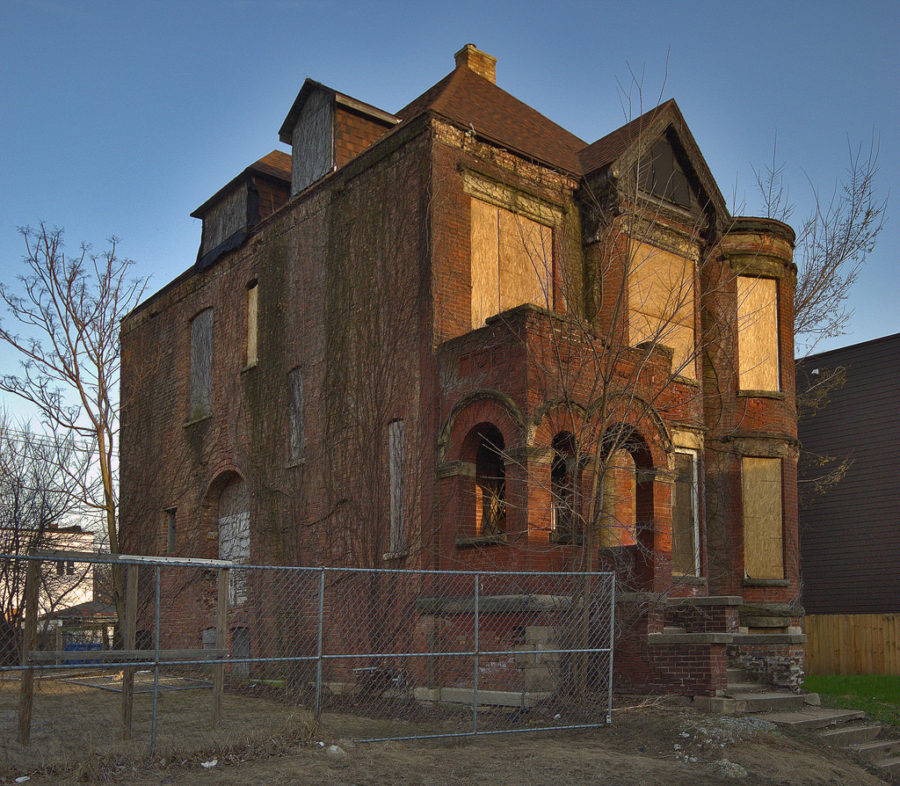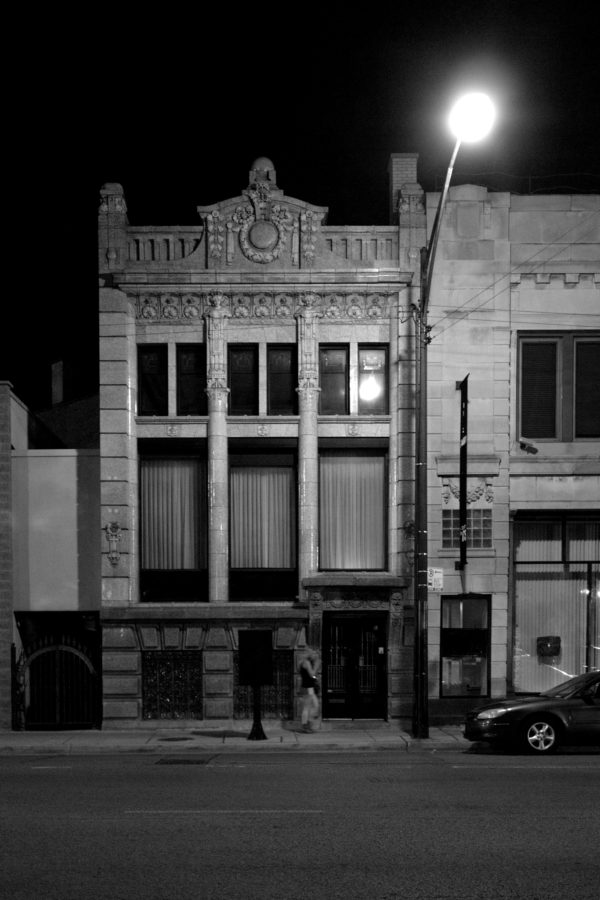Viewing all posts from the Noble Square neighborhood
 John Morris
John Morris
September 4, 2017
The first part of this series looked at the early history of Milwaukee Avenue, and now we’re going to look at two related styles prevalent along the diagonal thoroughfare: the Chicago School and Sullivanesque.
Above is the Chicago School style, 1913 Holabird & Roche building at Milwaukee, North, and Damen.
The Chicago School (or Commercial Style) is frequently referred to as the architectural style that brought forth the earliest skyscrapers. This style was practiced by the firms of Louis Sullivan, Frank Lloyd Wright, Holabird and Roche, and Burnham and Root.
The Sullivanesque style evolved in the late 1890s, growing out of inspiration from Adler & Sullivan’s grand creations. Some of its early practitioners were former employees of Adler & Sullivan’s firm and went on to create landmarks and icons espousing the principles of the firm.
But by the 1920s, the Sullivanesque architectural style quietly morphed into to a regional design pattern, one of many choices for economical facade design.
Continue reading »
 Chicago Patterns Staff
Chicago Patterns Staff
January 5, 2017

Every year brings new buildings and the demolition of others–it’s the continuous cycle that transforms inanimate structures into the growing and evolving organism of a city. In times of wealth and prosperity the number of construction and demolition permits grow, and in times of recession they dwindle.
Last year this cycle repeated largely as it has in years past. But there were a few themes in the destruction of Chicago’s architectural heritage: late 19th century Worker’s Cottages, grand South Side homes, Italianate row houses, and a few sparkling Victorians on the North Side.
It wasn’t all losses in 2016–there were a few wins, particularly neglected or damaged churches that will live on through adaptive reuse.
Continue reading »
 John Morris
John Morris
July 4, 2016

Milwaukee/Kimball/Diversey [John Morris/Chicago Patterns]
Outside of Downtown, Milwaukee Avenue is likely the fastest growing and changing thoroughfare in the city, and it isn’t the first time in history it’s had this position. Since the early beginnings of Chicago, it’s been a busy commuting path and one of the most bustling commercial centers.
The beauty and lore of this avenue was captured over a century ago in a book by a Jefferson Park resident:
What Soho is to London this diagonal avenue is to the Garden City. By turns the Greek, Italian, German, Scandinavian, Russian, Lithuanian and Pole monopolize the street signs, the corner news-stands, the sidewalks and the cars, or proclaim to the passing nose one aspect of their national delicacies.
Every half-section line exhibits in its ganglia, as the crossing of the thoroughfares, a sharp-angled picturesque frontage, akin to Seven Dials or Five Points in their palmy days.
—Alfred Bull, amateur historian describing Milwaukee Avenue in 1911
In the first part of this series, we’ll look at the early history of Milwaukee Avenue, and follow it until the boom years of the 1920s. Next we’ll cover the Chicago School of architecture, and later, the transition to the Machine Age and Art Deco.
Continue reading »
 John Morris
John Morris
September 4, 2014

Someone walking past a 1896 building sharing elements of Art Nouveau and Edwardian on Milwaukee near Thomas in Noble Square. The building is part of the Society for the Arts.




